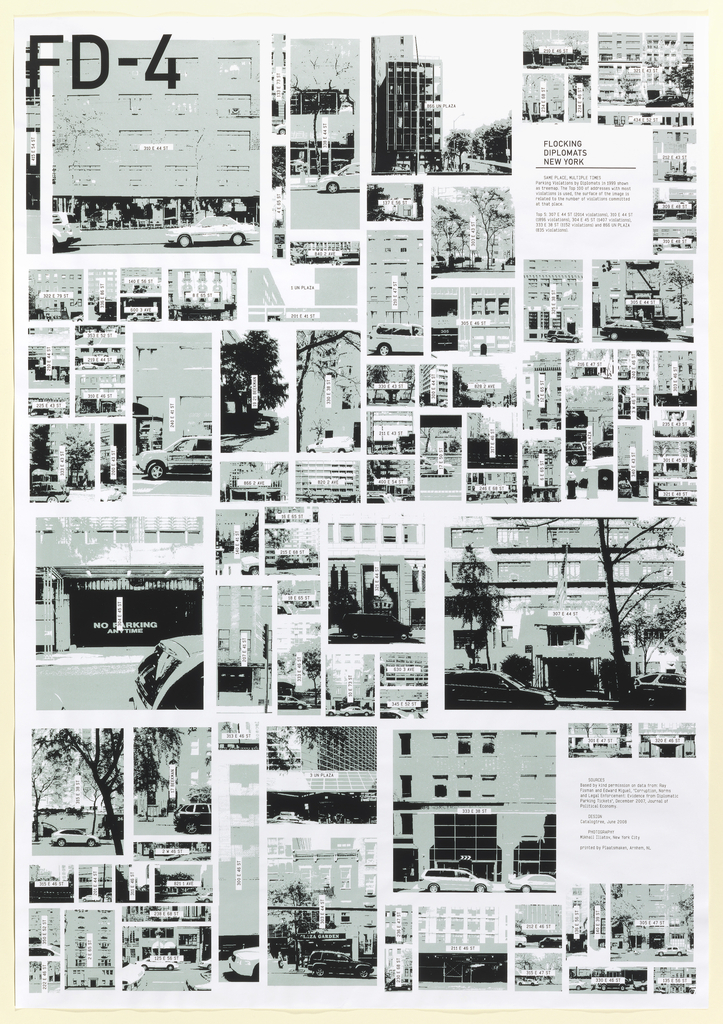“Data is always gathered at a certain time with purpose; and to be useful it must be mined, parsed, and presented. Each step of this process involves decisions about what to omit and what to prioritize. Yet the end result, the visualization, carries an authority, timelessness, and objectivity that belies its origins.”[1]
– Peter Hall
This is the fourth of six posters in the Flocking Diplomats series by Joris Maltha and Daniel Gross, founders of design firm Catalogtree. The series of data visualizations uses parking tickets issued to diplomats visiting New York City as an entry into six information graphics that each communicate a different story, covering location, top offenders, and even position of the sun in Central Park at the time of the incident. This poster highlights 100 locations where the most tickets were issued. It was done in collaboration with photographer Mikhail Iliatov to include stylized monochromatic photos on a slate grey backdrop. Each location is represented by a photo and address; the size of the picture is related to the number of violations issued at that spot.
We trust data to be an objective source of information and rely on data visualizations to communicate vast amounts of information in a digestible way. Successful visualizations synthesize information to help the viewer see patterns, draw conclusions, and engage with information in a new way. Visualizations exude certainty, rather than being the outcome of an interpretive and subjective process. Even if intended to be impartial; however, the process of creating a visualization requires its author to analyze the data and make decisions about how to represent the information in a meaningful way . The pictures in this poster utilize head-on angles, monochrome coloring, and views void of people to evoke associations with surveillance photography and investigative work. By choosing to use photographic elements in the design of this visualization, Catalogtree reminds the viewer that data is not an abstraction, but a representation of real events.
Cristina Cannella is a Digital Design Fellow in the Department of Drawings, Prints & Graphic Design at Cooper Hewitt, Smithsonian Design Museum. Cristina is currently pursuing her master’s in interaction design at NYU Tisch’s Interactive Telecommunication Program (ITP).
[1] 2011 Bubbles, Lines, and String: How Information Visualization Shapes Society, Graphic Design: Now in Production
